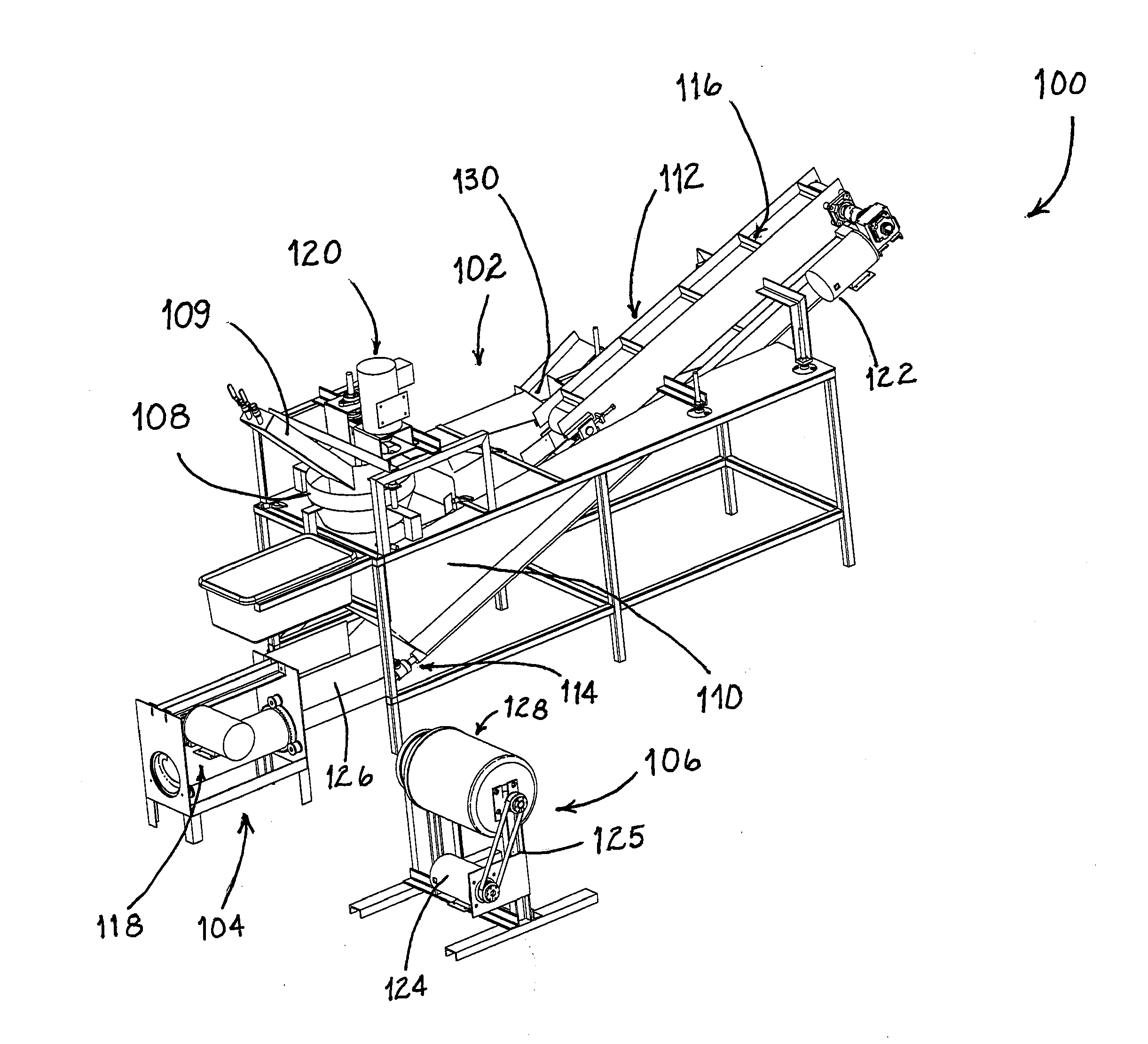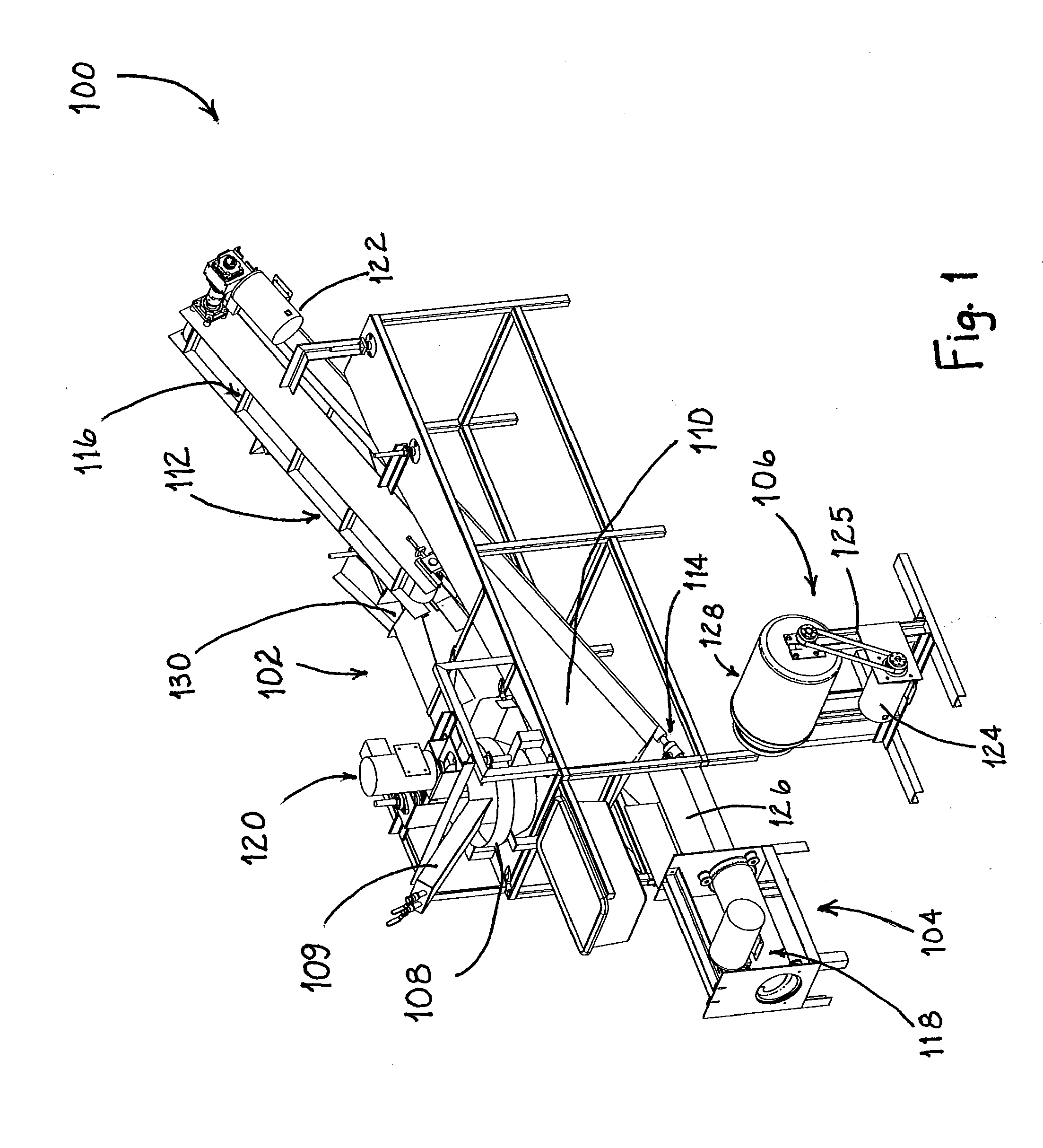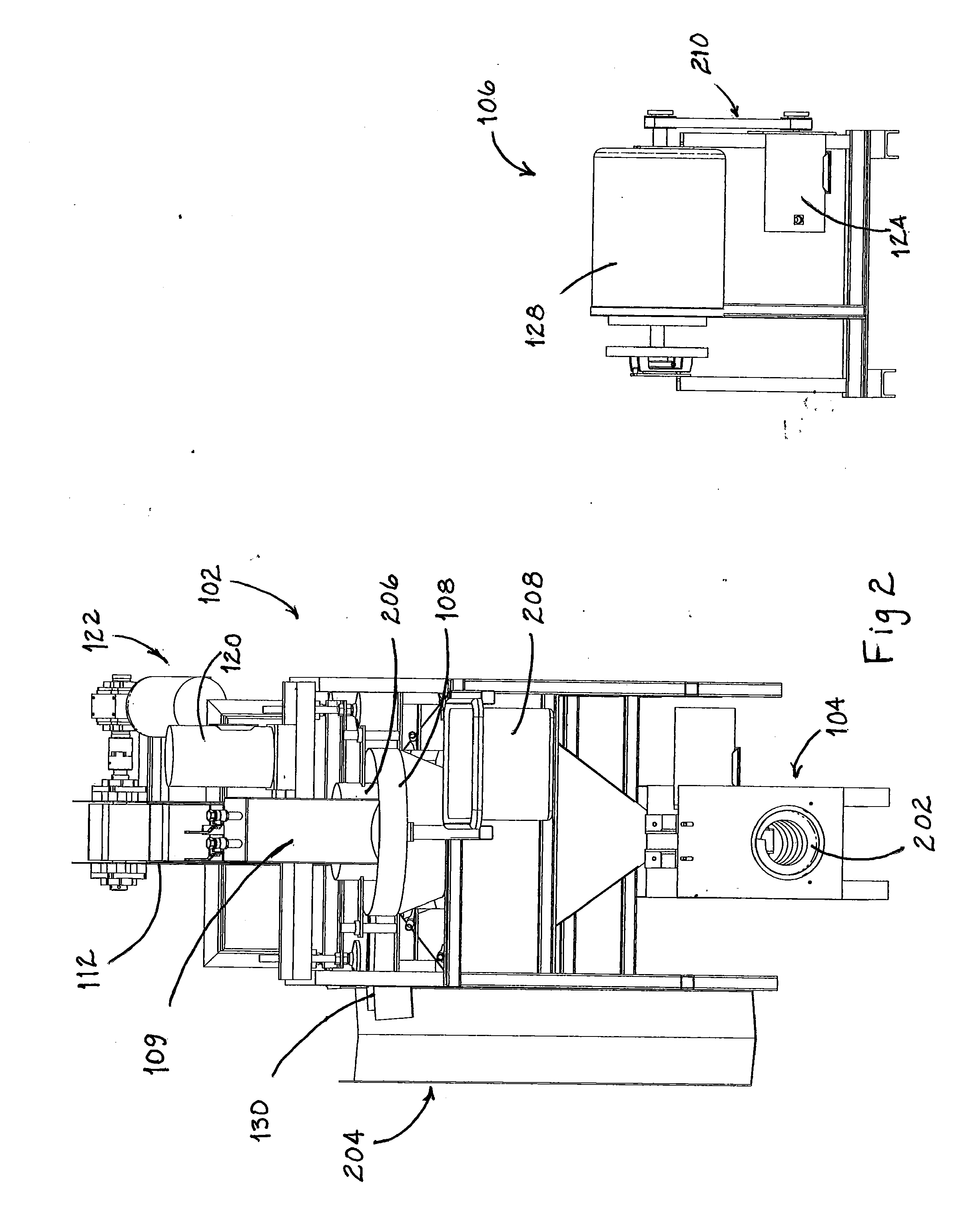Method and system for non destructive lean recovery
a recovery method and non-destructive technology, applied in the field of spare lean processing, can solve the problems of reducing the fat content of the remaining more lean portions, and the process does not assist in recovering any further lower fat lean portions from trimmings, so as to reduce the problem of excess water, reduce the amount of microbial growth, and facilitate the separation of the lean material portion and the fatty portion.
- Summary
- Abstract
- Description
- Claims
- Application Information
AI Technical Summary
Benefits of technology
Problems solved by technology
Method used
Image
Examples
Embodiment Construction
[0039]According to the embodiment(s) of the present invention, various views are illustrated in FIG. 1-13 and like reference numerals are being used consistently throughout to refer to like and corresponding parts of the invention for all of the various views and figures of the drawing. Also, please note that the first digit(s) of the reference number for a given item or part of the invention should correspond to the Fig. number in which the item or part is first identified.
[0040]One embodiment of the present invention comprising a grind plate that is about approximately ⅜ inch (other sizes can be utilized for greatest efficacy, which may vary depending on the source and type of mater being process), a water bath having an agitation or force inducing mechanism (for example a rotating blade, though other means of agitation can be utilized), a settling basin where the agitated material will flow and where the fat can float and the lean can sink below the surface, a fresh water flow me...
PUM
 Login to View More
Login to View More Abstract
Description
Claims
Application Information
 Login to View More
Login to View More - R&D
- Intellectual Property
- Life Sciences
- Materials
- Tech Scout
- Unparalleled Data Quality
- Higher Quality Content
- 60% Fewer Hallucinations
Browse by: Latest US Patents, China's latest patents, Technical Efficacy Thesaurus, Application Domain, Technology Topic, Popular Technical Reports.
© 2025 PatSnap. All rights reserved.Legal|Privacy policy|Modern Slavery Act Transparency Statement|Sitemap|About US| Contact US: help@patsnap.com



